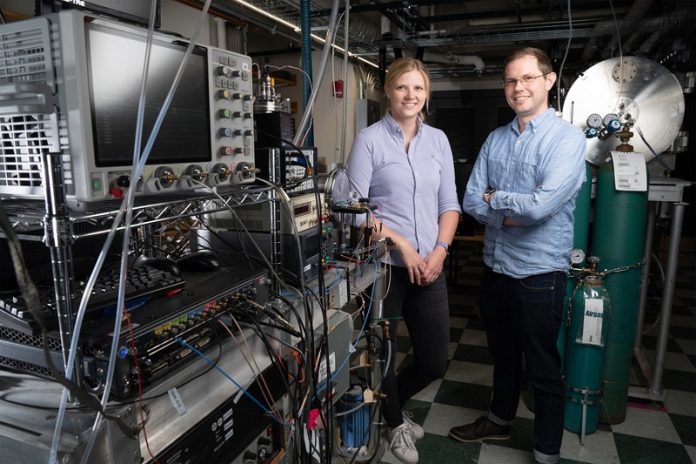
A team of researchers led by MIT has discovered a special carbon-containing molecule called pyrene in a distant interstellar cloud.
This cloud, made of dust and gas, is similar to the one that eventually formed our solar system. Scientists believe that pyrene could be a major source of the carbon that became part of our planets, asteroids, and comets.
Pyrene belongs to a group of molecules called polycyclic aromatic hydrocarbons (PAHs).
These molecules are made of carbon atoms arranged in rings and are thought to store up to 25% of the carbon in space.
Pyrene itself is a larger PAH with four carbon rings, and its discovery in this cloud offers new insights into how carbon might travel through space.
The research team found pyrene in a cloud named TMC-1, using the Green Bank Telescope in West Virginia.
However, detecting pyrene isn’t easy because its symmetrical structure makes it invisible to traditional radio telescopes.
To overcome this, the team looked for a slightly different version of pyrene called cyanopyrene, which has reacted with cyanide. This reaction breaks its symmetry and makes it detectable by the telescope.
This discovery is significant because it provides clues about where the carbon in our solar system came from.
“One big question in star and planet formation is how much of the early chemical material ends up forming the base of the solar system,” says Brett McGuire, an assistant professor of chemistry at MIT.
The presence of pyrene in TMC-1 is strong evidence that these early clouds could pass on their carbon to planets and other celestial bodies.
PAHs like pyrene have been found in meteorites, comets, and asteroid samples, which led scientists to suspect that these molecules played a role in forming our solar system.
In fact, a recent Japanese mission found large amounts of pyrene on the asteroid Ryugu. This similarity between TMC-1 and Ryugu suggests that pyrene may have been present since the early days of our solar system.
To confirm their findings, the researchers first created cyanopyrene in the lab. They studied the signals these molecules emit and matched them with the signals detected from the cloud. They found that pyrene makes up about 0.1% of all the carbon in TMC-1, which might seem small but is significant considering the vast number of molecules in space.
The discovery also raises questions about how pyrene forms. Scientists plan to investigate whether it formed directly within TMC-1 or came from elsewhere in the universe, possibly from dying stars.
Ewine van Dishoeck, a professor of molecular astrophysics in the Netherlands, described the discovery as “unexpected and exciting,” pointing out that it suggests new ways PAHs might form in space.
The team hopes to find even larger PAH molecules in the future, deepening our understanding of how carbon moves through the universe.



